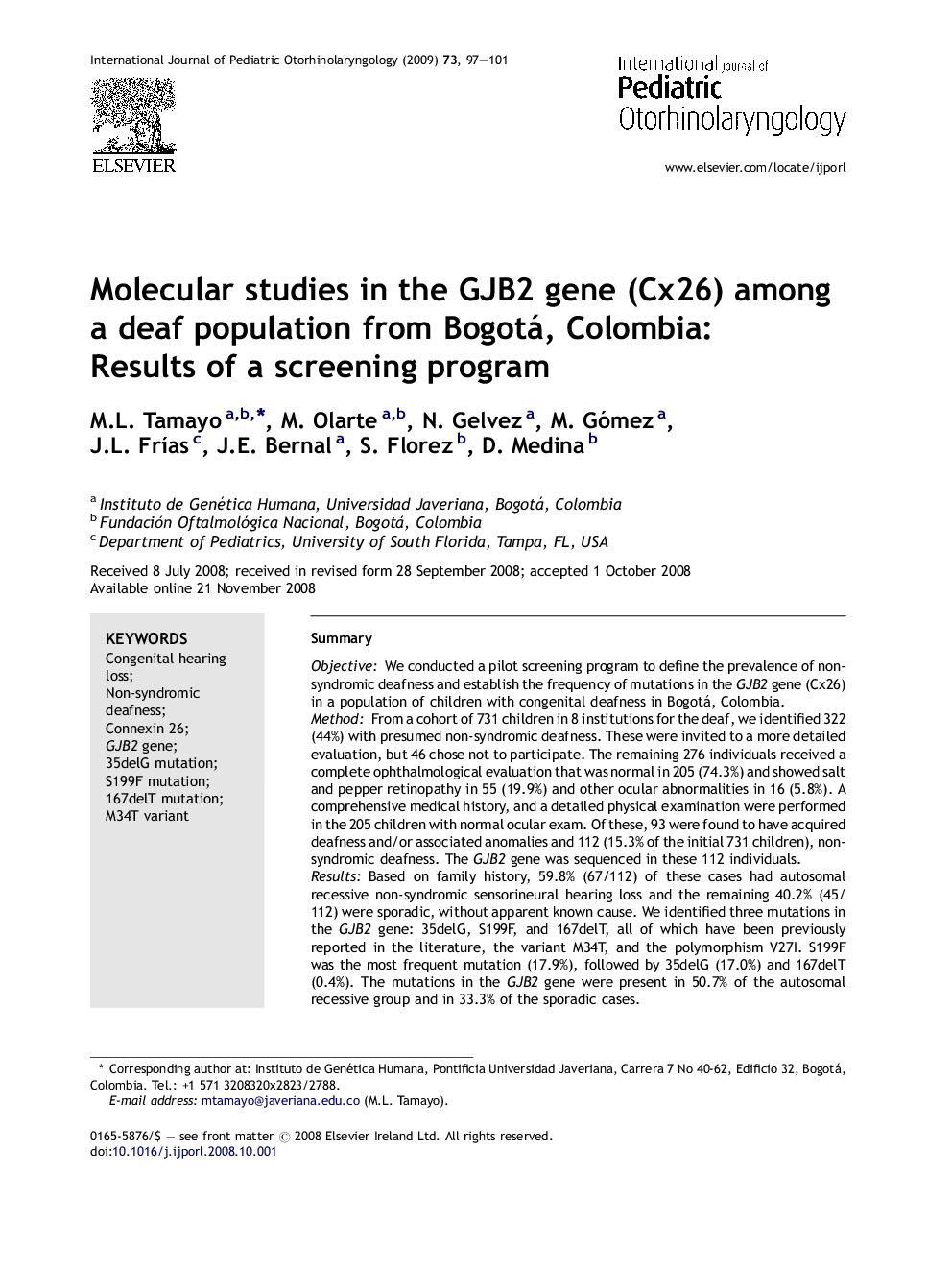| کد مقاله | کد نشریه | سال انتشار | مقاله انگلیسی | نسخه تمام متن |
|---|---|---|---|---|
| 4115393 | 1606074 | 2009 | 5 صفحه PDF | دانلود رایگان |

SummaryObjectiveWe conducted a pilot screening program to define the prevalence of non-syndromic deafness and establish the frequency of mutations in the GJB2 gene (Cx26) in a population of children with congenital deafness in Bogotá, Colombia.MethodFrom a cohort of 731 children in 8 institutions for the deaf, we identified 322 (44%) with presumed non-syndromic deafness. These were invited to a more detailed evaluation, but 46 chose not to participate. The remaining 276 individuals received a complete ophthalmological evaluation that was normal in 205 (74.3%) and showed salt and pepper retinopathy in 55 (19.9%) and other ocular abnormalities in 16 (5.8%). A comprehensive medical history, and a detailed physical examination were performed in the 205 children with normal ocular exam. Of these, 93 were found to have acquired deafness and/or associated anomalies and 112 (15.3% of the initial 731 children), non-syndromic deafness. The GJB2 gene was sequenced in these 112 individuals.ResultsBased on family history, 59.8% (67/112) of these cases had autosomal recessive non-syndromic sensorineural hearing loss and the remaining 40.2% (45/112) were sporadic, without apparent known cause. We identified three mutations in the GJB2 gene: 35delG, S199F, and 167delT, all of which have been previously reported in the literature, the variant M34T, and the polymorphism V27I. S199F was the most frequent mutation (17.9%), followed by 35delG (17.0%) and 167delT (0.4%). The mutations in the GJB2 gene were present in 50.7% of the autosomal recessive group and in 33.3% of the sporadic cases.ConclusionsOur pilot study showed that 15.3% of institutionalized deaf children in Bogotá have non-syndromic deafness and among them, the frequency of the S199F mutation was higher than reported in previous studies, whereas the frequency of the 35delG is similar to Caucasian populations. The fact that the S199F mutation was the most frequent allele in our study confirms the fact that the prevalence of GJB2 mutations depends on the ethnic origin. We emphasize the need to follow a strict protocol to identify bona fide cases of non-syndromic deafness among individuals with congenital hearing loss in order to identify the molecular basis of this condition.
Journal: International Journal of Pediatric Otorhinolaryngology - Volume 73, Issue 1, January 2009, Pages 97–101